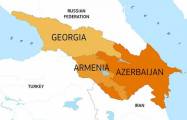Buying Whole Foods also represents a major escalation in the company’s long-running battle with Walmart, the largest grocery retailer in the United States, which has been struggling to play catch-up in internet shopping. On Friday, Walmart announced a $310 million deal to acquire the internet apparel retailer Bonobos, and last year it agreed to pay $3.3 billion for Jet.com and put Jet’s chief executive, Marc Lore, in charge of Walmart’s overall e-commerce business.
“Make no mistake, Walmart under no circumstances can lose the grocery wars to Amazon,” said Brittain Ladd, a strategy and supply chain consultant who formerly worked with Amazon on its grocery business. “If Walmart loses the grocery battle to Amazon, they have no chance of ever dethroning Amazon as the largest e-commerce player in the world.”
The idea of Amazon, a company founded 23 years ago on the premise of shopping from the comfort of a computer screen, moving forcefully into the crowded field of brick-and-mortar retail, with its limitations on selection and lack of customer reviews, once seemed ludicrous. But in the past several years, the company has dabbled with stores, opening or planning more than a dozen bookstores around the country.
In Seattle, it recently opened two grocery drive-through stores where customers can pick up online orders, along with a convenience store called Amazon Go that uses sensors and software to let shoppers sail through the exits without visiting a cashier.
The addition of Whole Foods takes Amazon’s physical presence to a new level. The grocery chain includes more than 460 stores in the United States, Canada and Britain with sales of $16 billion in the last fiscal year. Mikey Vu, a partner at the consultancy Bain & Company who is focused on retail, said, “They’re going to be within an hour or 30 minutes of as many people as possible.”
Founded in 1978 in Austin, Tex., Whole Foods is best known for its organic foods, building its brand on healthy eating and fresh, local produce and meats. It has also long been caricatured as “Whole Paycheck” for the high prices it charges for groceries. That conflicts with a core tenet of Amazon, which has made low prices part of its mission as a retailer.
Analysts speculated that Amazon could use its $99-a-year Prime membership service, which gives customers free, two-day shipping and other benefits, to offer Whole Foods customers a better price on groceries, as it does for books in its bookstores. The stores could also serve as an advertisement to get more customers to sign up for Prime; in September the financial firm Cowen & Company estimated that Prime had 49 million subscribers in the United States, representing about 44 percent of households.
Amazon has been on a multiyear offensive to open warehouses closer to customers so it can deliver orders in as little as two hours, and Whole Foods stores will further narrow Amazon’s physical proximity to its shoppers. The stores could become locations for returning online orders of all kinds. Amazon could also use them to cut delivery times for online orders.
The $13.4 billion deal, which does not include net debt, immediately raised questions about whether Amazon’s experiments with automation, like the cashier-less checkout technology it is testing in its Amazon Go store, could eventually lead to job losses at Whole Foods stores.
“Amazon’s brutal vision for retail is one where automation replaces good jobs,” Marc Perrone, president of the United Food and Commercial Workers International Union, said in a statement. “That is the reality today at Amazon, and it will no doubt become the reality at Whole Foods.”
Drew Herdener, a spokesman for Amazon, said it has no plans to use the Amazon Go technology to automate the jobs of cashiers at Whole Foods and no job reductions are planned as a result of the deal. Whole Foods workers are not unionized.
The move to buy Whole Foods is a further sign of the outsize ambitions of Jeff Bezos, Amazon’s chief executive and founder, who came under fire from Donald J. Trump during the presidential campaign last year, when Mr. Trump said Mr. Bezos had a “huge antitrust problem because he’s controlling so much.”
More about: #Whole-Foods #Amazon
















































